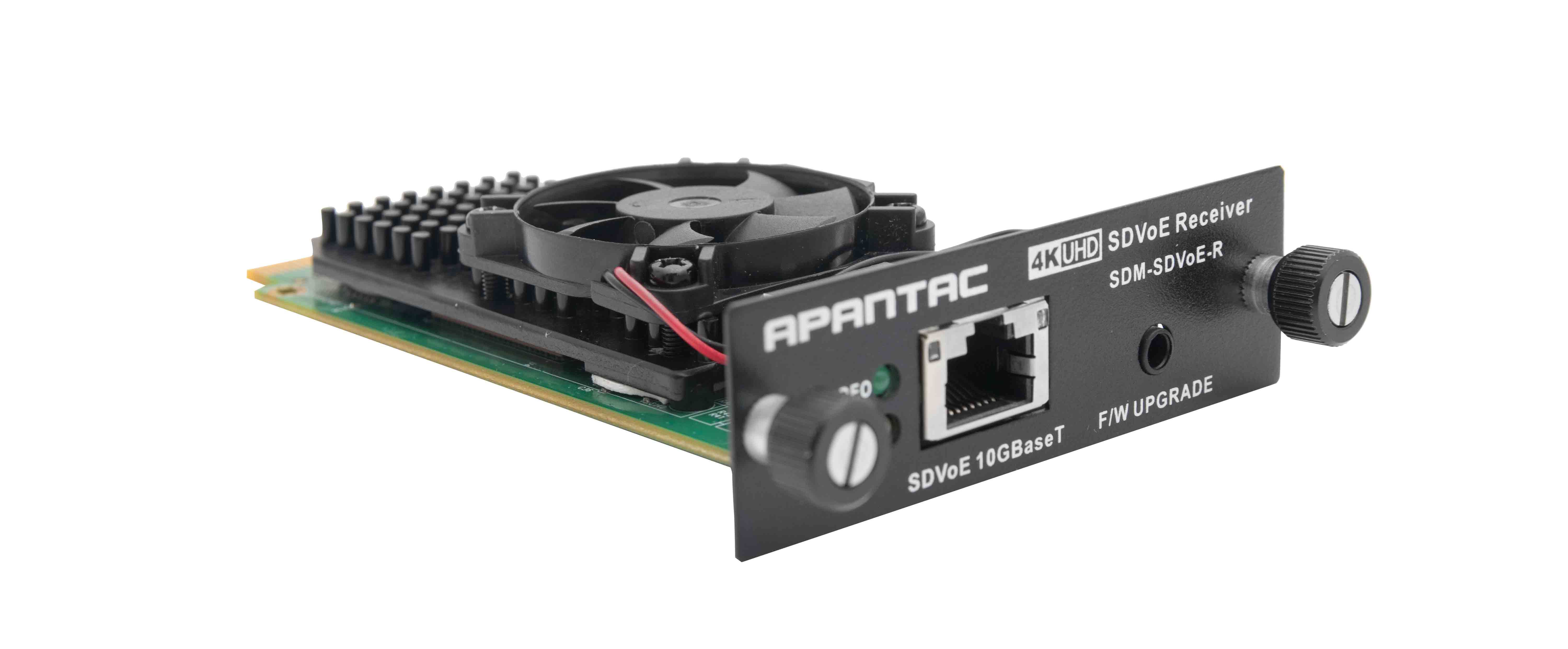Executive Q&A: Embracing Alliances
Apantac president Thomas Tang sees opportunity in AV-over-IP interoperability.

SCN: Why is there an “OLY” after your name?
Thomas Tang: I am a two-time Olympian and participated in the 1988 and 1992 Winter Olympics in Alpine Skiing. I’ve always thought that this kind of dedication and hard work has helped me with the growing pains of starting my own business and pushing through the most challenging times.

SCN: Why did you decide to start Apantac?
TT: I started as a flight simulation engineer in the late 1980s and early 1990s and worked on various projects including F16, F14, Apache, and other simulators. In the 1990s, when computer graphics were becoming a key part of the broadcast industry, the CEO of our company saw an opportunity to enter the broadcast industry. A group of us was assigned to work on computer graphics applications for television.
To make a long story short, our group was later sold to Vizrt, and I became one of the first 30 employees during the early days of the company. Today, Vizrt is a major player in broadcast graphics.
[Executive Q&A: Technology Meets Vibe]
After a few years at Vizrt, I was recruited by Philips Broadcast as its North America and Asia Pacific marketing manager for the routers and master control business unit. After several divestitures and acquisitions between Philips Broadcast, Thomson Broadcast, and the Grass Valley Group, I was assigned to manage the marketing group for the Grass Valley video server division. During my time working in these large organizations, I found myself dedicated to offering many product ideas, yet they weren’t always a good fit for corporate product roadmaps.
A daily selection of the top stories for AV integrators, resellers and consultants. Sign up below.
At this point my wife offered up an interesting idea: If I was going to be working this hard, perhaps I should be working for myself—thus the beginning of Apantac. In Spring 2008, I moved my ideas into my basement and began the process of engineering, thankfully having that experience earlier on in my career. In 2009, Apantac exhibited at its first NAB, our first multiviewer product won a Broadcast Engineering “Pick Hit” award, and the rest is history. We now have over 200 products in our catalog.
SCN: What are the short and long-term goals for your company?
KVM-over-IP is more flexible and popular, but there are still times when a point-to-point, low-latency KVM extender is required.
TT: One of our core goals as a company is to help our customers with their product and application challenges. We’ve always taken the approach of listening to customer feedback and helping solve their issues by modifying our current products or building new ones. We also aim to bring our many years of experience in the broadcast industry to the Pro AV marketplace and deliver the reliability of broadcast product requirements to the Pro AV industry. In addition, we aim to solve challenges in both AV-over-IP and traditional baseband video.
SCN: How is Apantac celebrating its 15th anniversary?
TT: We have been very fortunate that we have always had a very stable and consistent engineering, sales, and marketing team. And not to forget our technical support and back-office teams. We celebrated our 10th anniversary by shutting down the office for a week and inviting all our employees and their partners to a resort in Mexico. I look forward to doing something similar for our 15th anniversary. I feel that it’s so important that our team can all get together, relax, and recharge.
SCN: Between HDBaseT, SDVoE, and NDI, Apantac certainly does not shy away from alliances. Why are these relationships important for your company?

TT: In the Pro AV industry, there are so many different methods to solve problems, and it’s important that we adapt to all the current standards. Each of the alliances you mentioned above has its unique advantages and we are open to all of them. This also includes the latest AV-over-IP standard, IPMX.
SCN: You’ve also partnered with openGear. What are some of your most popular cards?
TT: Traditionally, openGear has served as a broadcast platform, so we have typically brought broadcast-focused cards to market. We’ve been an openGear partner since 2013, and historically our most popular cards are scan converters and frame synchronizers. However, in the past few years, we have started making more Pro AV-focused products, including KVM-over-IP, HDBaseT, SDVoE, and NDI. These cards for the popular openGear platform are gaining a lot of traction.
[Executive Q&A: Simplified Systems through Standards]
SCN: How important are KVM solutions to Apantac’s business?
TT: In 2010, we started building KVM extenders, which were solving very specific problems for our customers. Servers and computers were always located in the equipment room, yet the user stations were far away, which meant reliable extenders were very important for the application. For the last four years, we’ve been designing, building, and delivering KVM-over-IP products, which have expanded our KVM extender line and broadened our KVM solutions to include KVM matrices. We now even have our KVM technology built into our multiviewers. Based on global customer feedback, we are proud to say our KVM products solve several key challenges, and are considered highly reliable and quality solutions.
SCN: KVM or KVM-over-IP: What’s the more popular choice these days?
TT: This really depends on the application. KVM-over-IP is more flexible and popular, but there are still times when a point-to-point, low-latency KVM extender is required. To offer a complete solution to our customers, we have built a portfolio of products that now include KVM-over-IP, KVM point-to-point extenders, KVM switches, and multiviewers with integrated KVM functionalities.
[One Standard to Rule Them All?]
SCN: What’s next for the Pro AV industry?
TT: There is a lot of buzz around AV-over-IP, and the Pro AV industry is looking for a standard. The alliances mentioned earlier (HDBaseT, SDVoE, NDI) already have large customer bases. IPMX is a fast-emerging set of standards and specifications for AV-over-IP. As AV-over-IP is evolving, I see a big challenge around interoperability. There is a need for products to serve as a bridge and allow interoperability between all the systems that support all the different standards and specifications.

Mark J. Pescatore, Ph.D., has been the content director of Systems Contractor News since 2021. During his career, he's hosted and programmed two ongoing regional industry trade shows (including Future B2B's AV/IT Summit), produced and hosted podcasts and webinars focused on the professional video marketplace, taught more than a dozen college communication courses, co-authored the book Working with HDV, and co-edited two editions of The Guide to Digital Television.
